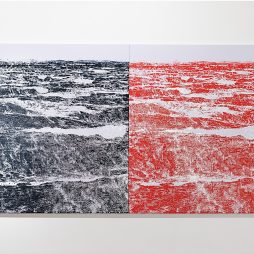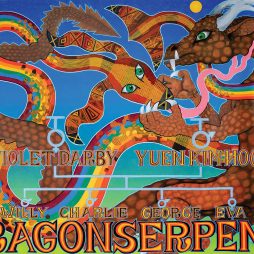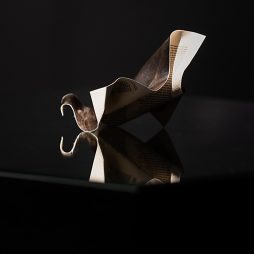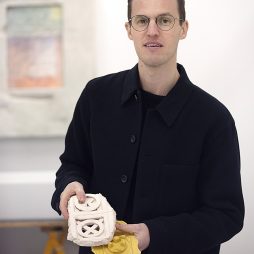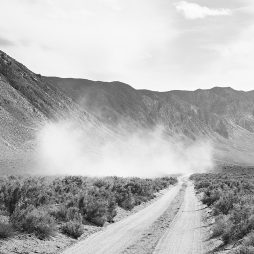INTERVIEW: Royston Harpur, A Painter’s Painter
After many years of international travel and a stint of teaching at the National Art School, Royston Harpur settled in Mudgee in 2001 and continues to paint every day.
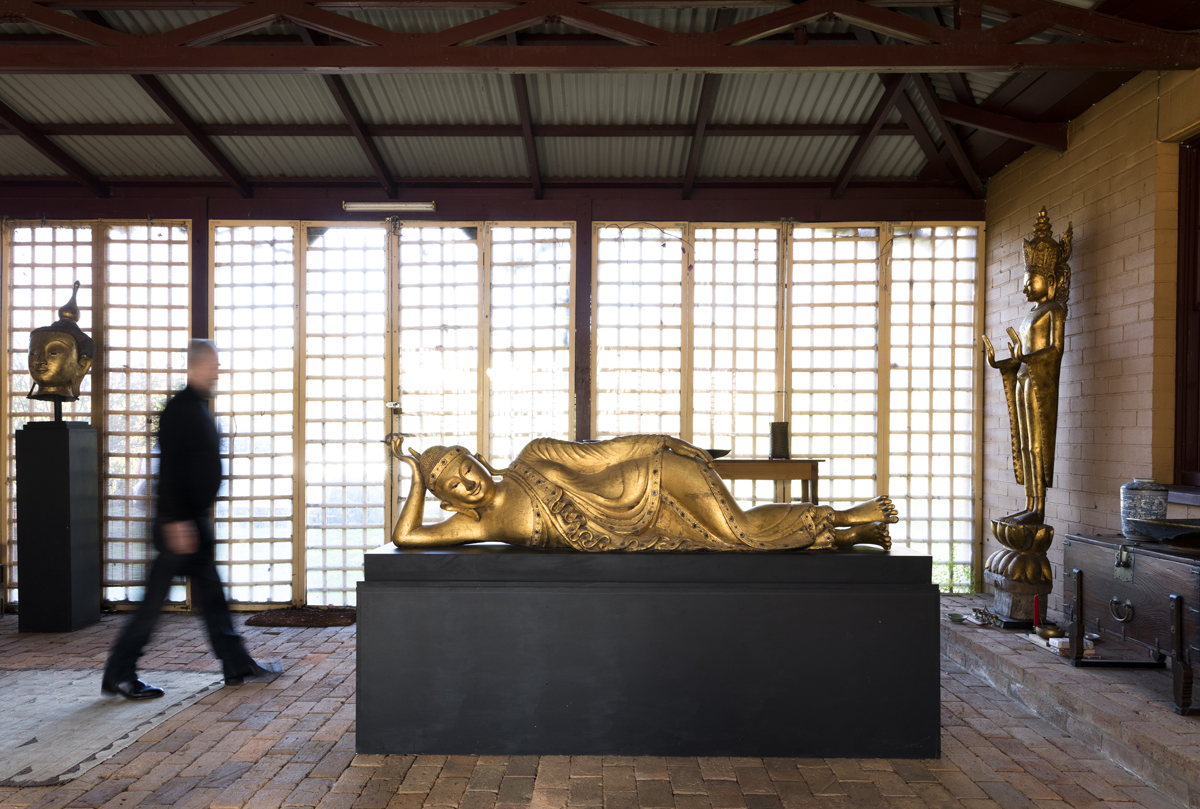
You studied with the Polish born painter, Professor Maximilian Feuerring from 1956 to 1959. Was that at an art school?
I was eighteen and I saw Feuerring’s advertisement for private art classes in the local newspaper, so no it wasn’t an art school. He had been a professor at the Universitas International in Munich (1947 -1950) and was typical of people who had really impressive positions in Europe. After leaving the internment camps no one would give them a job that recognised their qualifications. In the United States, many of the artist refugees were made professors at places like Yale, but not here in Australia. Because of this situation after World War II, many European painters started their own schools, particularly in lower George Street in Sydney. We ended up becoming very good friends.
Did your parents try to stop you being an artist?
Before the war, my mother was a jazz singer and my father was in the theatre. My sister did ballet and I did art. So, it was all quite normal in our family. Our house was always full of bohemians. My parents got married in St Johns Church, Darlinghurst. The best man was the wrestler and showman Chief Little Wolf and the people singing there were The Ink Spots. My parents were a pair of eccentrics.
In 1961, you were the first student of restoration in Australia. What made you pick that?
It was advertised. I have been very lucky. If there was an advertisement or I’d been sitting in the audience and asked a question, they’d ask “Would you like to come and work for us?”
You didn’t wait for things to happen?
I wasn’t that type.
You lived in the United Kingdom and Malta in 1964 and made large minimalist canvases with reduced colour. How did that came about?
Barnett Newman was a big influence at the time. John Kasmin had a gallery in London. I got to know the works of artists who were around then, like Morris Louis and Helen Frankenthaler. Kasmin used to ask me to look after the gallery while he went out for cigarettes. There was also the Whitechapel Gallery, which showed the big retrospectives of just about all the famous Americans, like Jasper Johns.
I wasn’t making art like that before. It was more German expressionistic, with a high colour style similar to my professor’s. It was the usual way things happened at that time. I returned to Australia and in 1966 got involved with Central Street Gallery in Sydney, as a director as well as exhibiting there. Tony McGillick’s half-brother, John White and his partner Harold had an advertising agency and got fantastically cheap rent in Central Street. However, they wanted to relocate to North Sydney where all the action was for advertising. Tony said “Let’s take it over”, and we did. As our friends started returning from England they exhibited there. It was a powerful force. Similar to artist-run spaces now but not quite – it was very doctrinaire, shall we say. It became an influential Sydney institution.
In 1968, you had two large shows at Gallery A in Sydney and Melbourne, which established your reputation. A number of Japanese artists saw these and invited you to work with them in Kyoto in the early ’70s. Was that a formative experience?
I met many interesting people there. I worked with the famous Japanese calligrapher Shotei Ibata. He remains a very good friend of mine to this day. He knew everybody, including the potters Col Levy and the late Peter Rushforth. He helped many Australian artists in Japan.
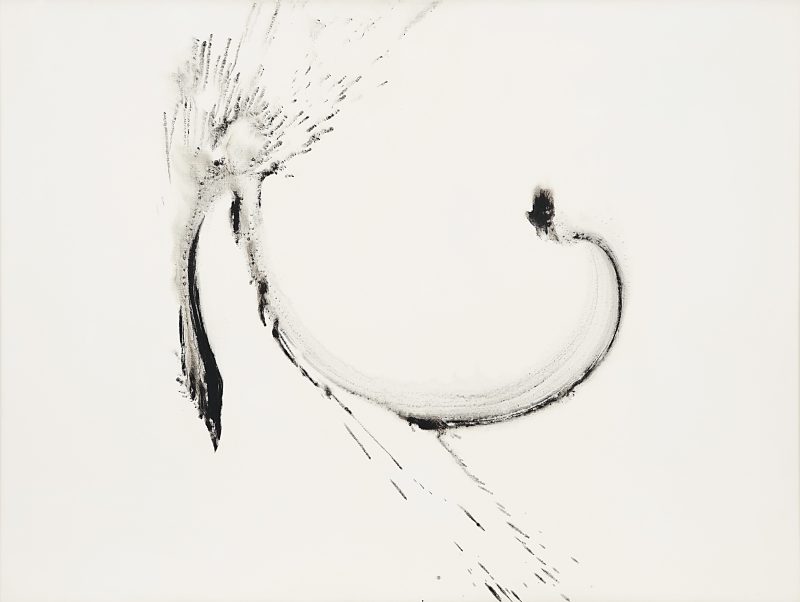
Waterbird, 1971, Liquitex on panel, 91.5 x 122 cm. Collection of the Artist
When did you start using Masonite, Liquitex and Josef Albers’ technique of prepping?
I started before I went to Japan. I wanted to get around working on paper. I’d prepare the Masonite with six coats of Liquitex gesso, with each layer painted in alternate directions so the cross-hatching result created a linen-like effect. I needed to work on something more substantial than paper, as I was working outside and moving paint around with water from a garden hose. Peter Upwood and Stanoslav Rapotec were doing similar things at the time. This was the work the Japanese saw, and they were very interested in the technique I was using. The paint operated in a totally different way from ink. By waterproofing the base, I had more time to work with the paint and water. Also, being outside had seasonal repercussions. In summer, it would dry faster, so you had less time to work with the paint; in winter, you had longer.
It’s not just about considering things conceptually, is it? It is actually a very physical activity.
You don’t have time to think. It’s a really fast decision-making process because if the paint dries you are in trouble. It has taken time and experience to develop this ability. Clearing your mind of all preconceptions. It is like music. For example, Sviatoslav Richter, the Russian pianist, taught himself to play the piano. When he wanted to study, they told him they couldn’t teach him anything but he wanted to go anyway. There he learnt about the nature of silence. It was the one thing he couldn’t teach himself. In the early days, my work was more or less abstraction, but what I didn’t realise was that the landscape was always there. You throw up imagery all the time. It starts with black, and as soon as you begin you’re dealing with imagery and the vision, and then you’re changing the imagery or you’re waiting for the right one. You are constantly changing, responding and adapting. That’s the point.
Eventually you found your way to the National Art School (NAS), in 1973.
I got the job at National Art School because of John Coburn. He was the Head of School and thought it was too inward looking. Previous students were teaching the next generation and he thought this was no good – they needed to have different people. The three who ended up with the jobs at the time were Sydney Ball, Peter Upward and myself. We had no history with NAS. They wanted professional artists teaching students. I was there for 20 years and retired in 1992. I first taught painting and ended up teaching art theory – a better description would be the philosophy of art. It was hard introducing these ideas to students who on the whole had little formal education.
The trick in teaching is to get people to generate work themselves. You point them in the right direction and even get them to think that they discovered it. Unfortunately, art schools changed once they merged with universities.
I’ve seen some great students who I thought were brilliant, but they disappeared. Life gets in the way. It’s about survival. The hardest part is the three or four years after you have left the institution. You have to be able to self-generate and be disciplined.

Crossing into the bridge of night, 2012, acrylic on panel, 61.0 x 183.1 cm. Photographed by Jonathan Stenson
Alan Sisley once said your work was in the genre of gestural abstraction.
Titles, tagging, whatever … it doesn’t interest me at all. People in the past have asked me about Zen Buddhism and I can’t make any comment. It’s too complicated. I remember the Japanese author, Daisetsu Suzuki, on the stage giving a lecture, and after some consideration he said, “Too hard to explain.” That was the end of the lecture. He finally said “No…I can’t explain it to you.”
The titles of your works are intriguing.
Na Lan’s Mountain- twilight, 2011, is named after a close friend of mine who reads and translates a lot of the inscriptions on the scrolls I find. Her father is a very famous calligrapher. Emei – shadow rain, 2009, is a sacred mountain in China. I was lucky, as I was one of the last people to be able to visit there. It’s one of the five sacred sites of China. From the Simurgh’s journey, 2014, is named for a divine bird from a Persian myth and In Bada’s pond, 2007, is named after the great Ming eccentric, Bada Shanren (1626–1705). It means something to me, and people want titles. Sometimes, however, you can overthink these things.
I wanted to ask you about your poetry. In China it isn’t unusual that artists are also poets, is it?
Not unusual at all. I began writing poetry soon after I began exhibiting, at the age of nineteen. My influences at the time were French, Spanish and Russian rather than Asian. That changed. I discovered Asian poetry myself, being somewhat of an autodidact. Art is very similar to poetry and in particular Chinese or Japanese poetry. It is not always about what is being said, but what is in between, because the way it is written leaves room and space for your mind to move between one image and another.
How do you feel about your success as an artist?
What success? (laughing)
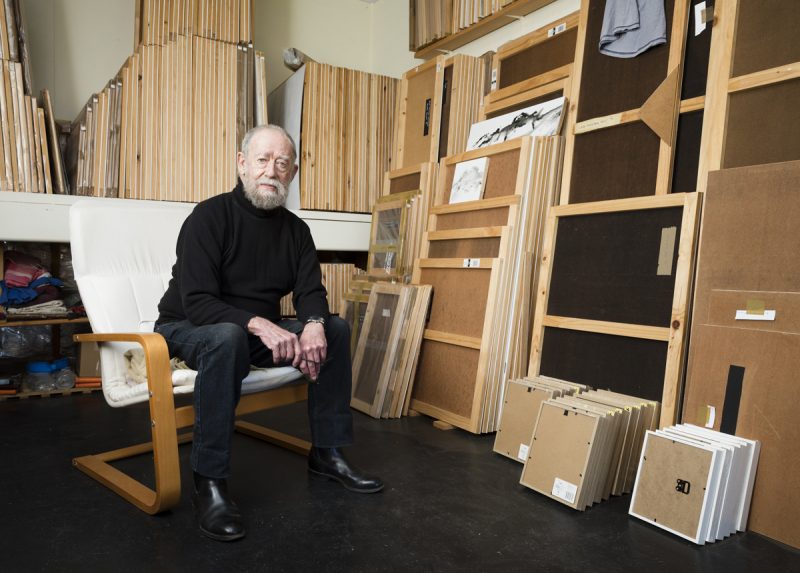
Royston Harpur in his studio, Mudgee, New South Wales, 2020. Photography by Silversalt Photography
I read that in the past, Chinese artists would never consider selling an artwork.
That is a Literati tradition, which started in the Northern Song period (960 – 1127). The most outstanding and famous proponents would be Su Shi and Dong Qichang. They concentrated on what the value and the meaning of art were. Art was to improve the individual and their quality of life. Pictures were given to deserving people. There are exceptions, of course. This idea changed the history of Chinese art completely and had a big influence on Japanese art. It’s the antithesis of the contemporary art world.
So, art has never been about making money?
No. I have given a lot of work to museums though.
This interview first appeared in Artist Profile Issue 52. Images courtesy of Silversalt Photography and Charles Nodrum Gallery, Melbourne.
H.R. Hyatt-Johnston is an artist and writer.
Royston Harpur died in 2023, Mudgee, New South Wales.
EXHIBITION
Royston Harpur: A Painter’s Painter
26 September – 7 December 2025
Mudgee Arts Precinct, Mudgee, New South Wales
PUBLIC PROGRAM
“Royston Harpur’s life and work,” Rex Butler and Brad Buckley in conversation.
Saturday 27 September at 11.00 a.m.
Mudgee Arts Precinct, Mudgee, New South Wales
Free entry. All invited.


